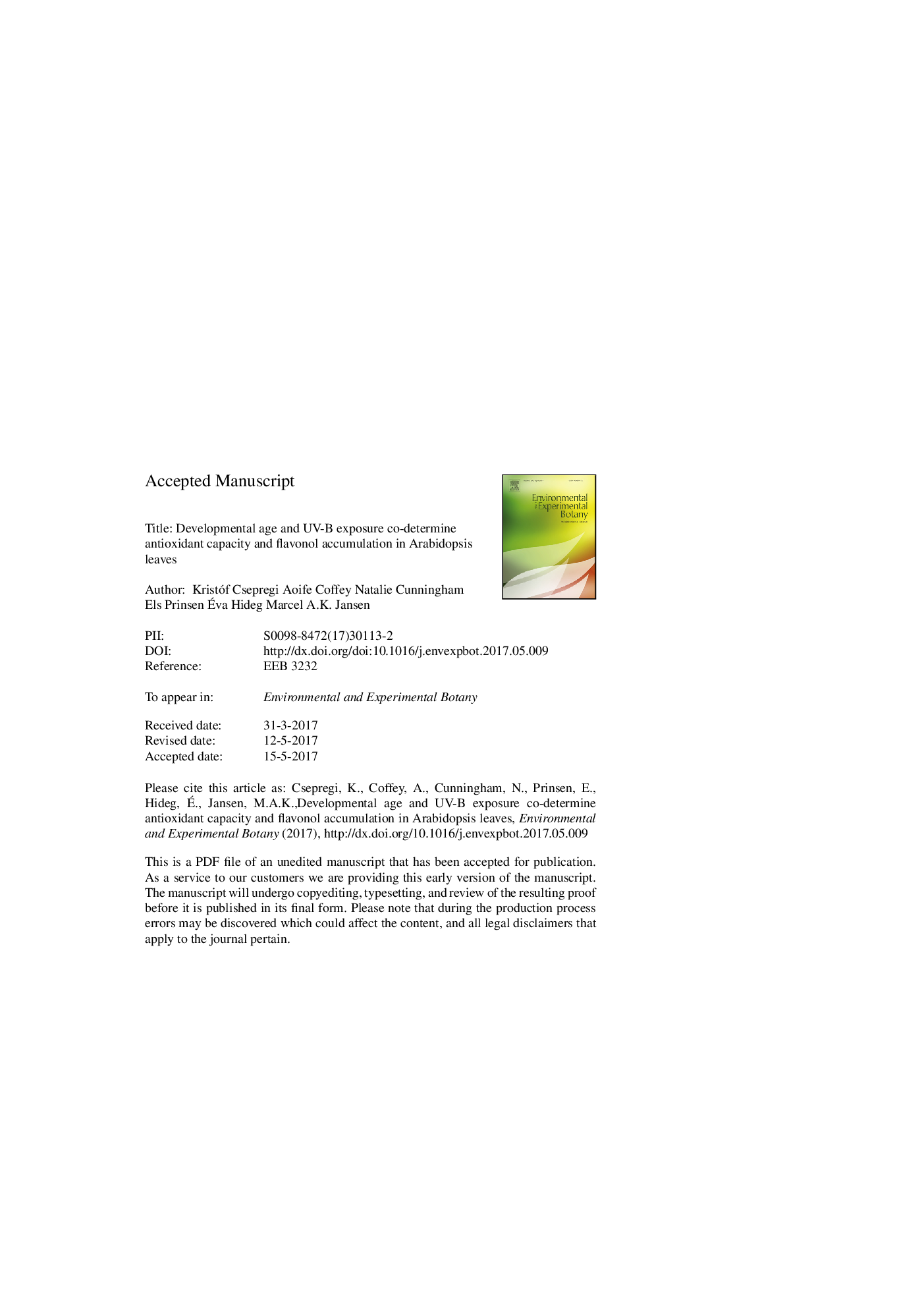| Article ID | Journal | Published Year | Pages | File Type |
|---|---|---|---|---|
| 5766641 | Environmental and Experimental Botany | 2017 | 31 Pages |
Abstract
Developmental age is an important determinant of plant stress responses. In this study the importance of “within-individual-heterogeneity” of developmental age for plant UV-B responses was quantified. Arabidopsis thaliana rosettes were raised under indoor conditions, and the responses of leaves at different developmental stages were compared following exposure to supplemental UV-B radiation. Exposure to a low dose of UV-B had positive effects on concentrations of UV-absorbing pigments, quercetins and kaempferols as well as total antioxidant activity measured. Unlike UV-B, developmental age had a substantial effect on photochemistry, and especially energy dissipation. Younger leaves display relatively strong regulated dissipation, while older leaves show more non-regulated, non-photochemical energy dissipation. Developmental age also impacted on concentrations of UV-absorbing compounds, and antioxidant activity. In fact, developmental variation matched, or even exceeded the UV-induced response for these two parameters. Thus, pooling of rosette leaves is not necessarily a good strategy to visualise plant UV-responses. Rather, to fully understand plant UV-responses in a developmental context it is important to advance reporter technologies for physiological studies, including spin-trap technology to visualise in planta ROS and ROS-defences, and fluorescence excitation screening technology and chromogenic assays for in planta visualisation of specific UV-absorbing pigments.
Related Topics
Life Sciences
Agricultural and Biological Sciences
Ecology, Evolution, Behavior and Systematics
Authors
Kristóf Csepregi, Aoife Coffey, Natalie Cunningham, Els Prinsen, Ãva Hideg, Marcel A.K. Jansen,
